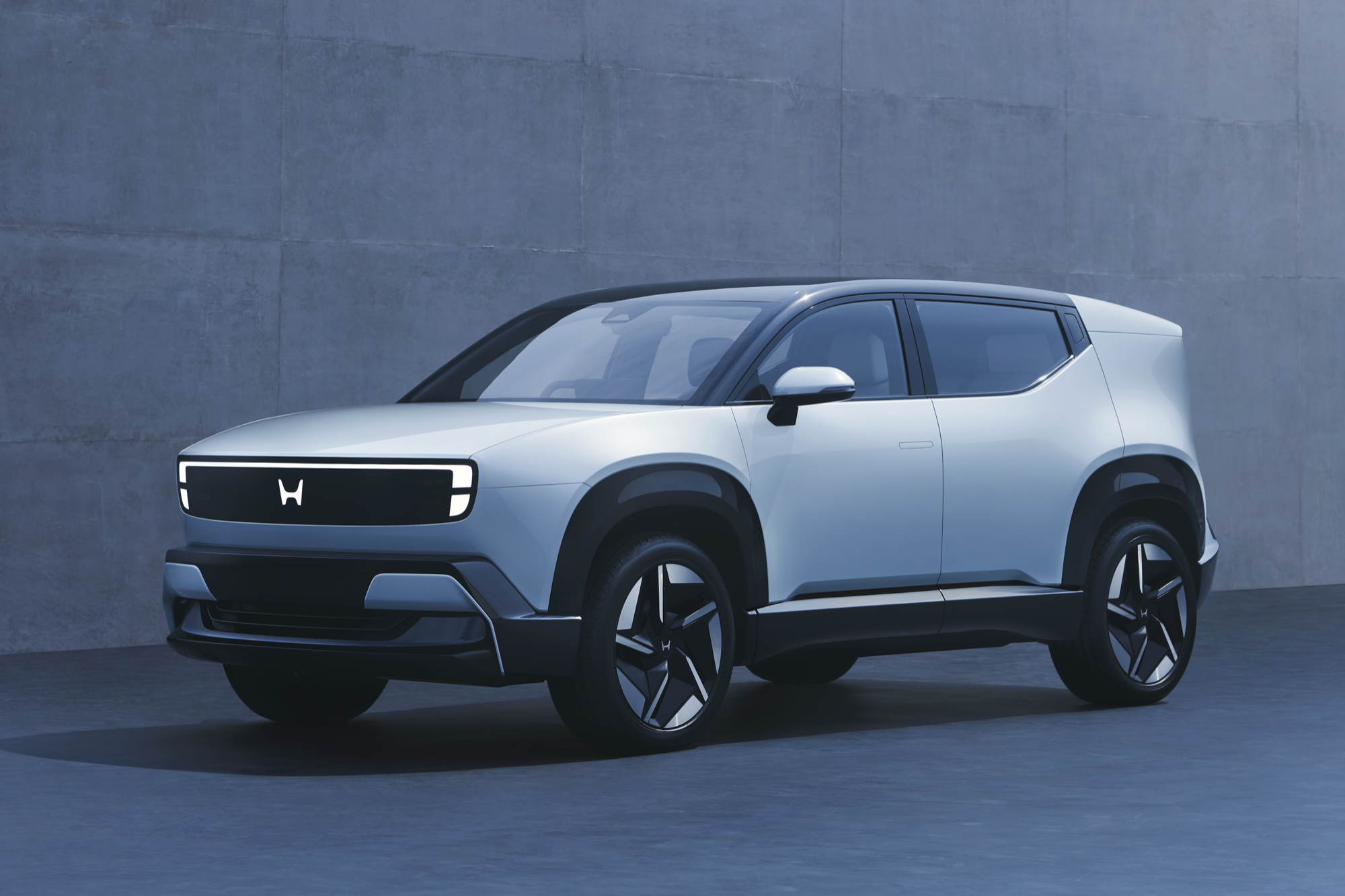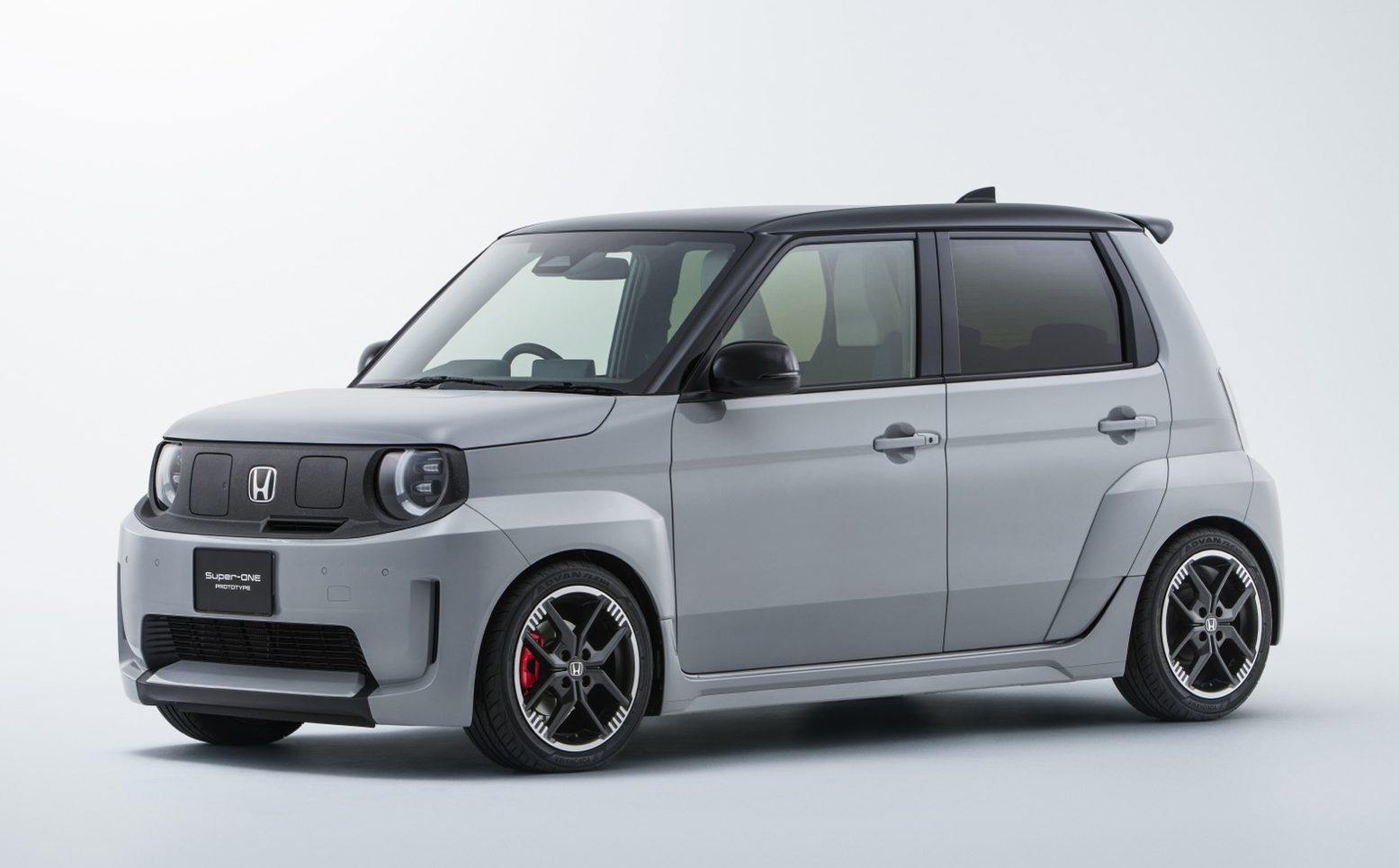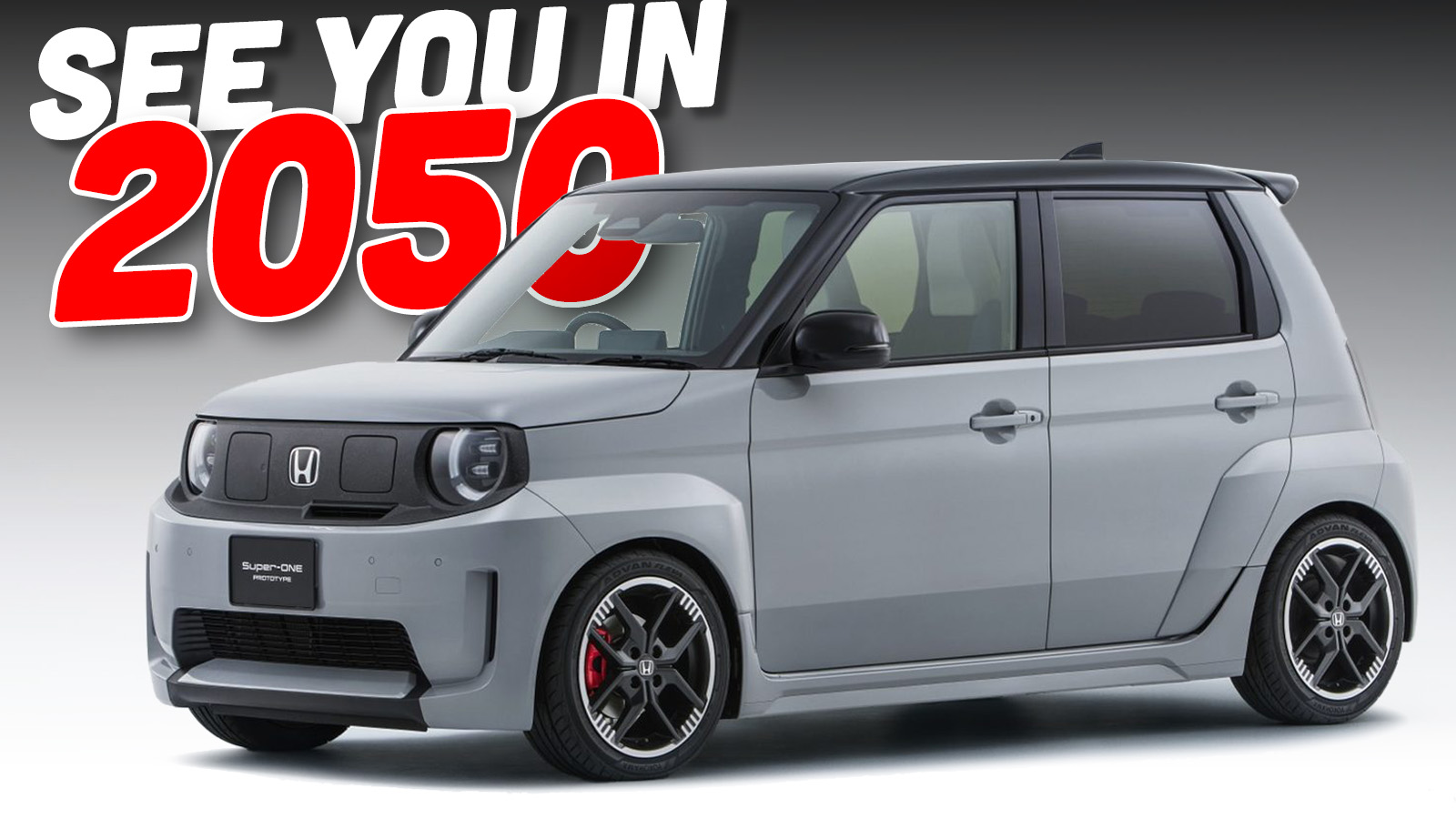It’s late October during an odd-numbered year, so that means it’s time for the biennial Japan Mobility Show. Unlike in America where auto shows have largely receded in car shopping events for consumers, automakers still take part in the event formerly known as the Tokyo Motor Show and Honda invited us to come to Japan to see their latest wares including a couple of electric vehicles that go on sale in 2026 and 2027, the Honda 0 α (please don’t let that be the name of the production model!) and Super-One in prototype form along with a bunch of other interesting stuff. That Super-One electric hot hatch kei car might be the coolest thing to import to America in 25 years.
Of the two prototypes, the 0 α already looks a bit familiar but neither this or the Super-One are likely to appear on American roads anytime in the foreseeable future. The 0 α rides on Honda’s new 0 series architecture that will underpin three new EVs for North America over the next 18 months or so, the 0 SUV and Saloon as well as the Acura RSX.
Spacer
This is an all-new architecture that will underpin the three vehicles built in Marysville, Ohio. The key propulsion and battery components will also be utilized for the Afeela 1 coming from the Sony Honda Mobility joint-venture that will be assembled at another Honda factory in East Liberty, Ohio although that vehicle will also use a lot of components unique to it.
The 0 α bears a strong resemblance to the 0 SUV that was first shown in prototype form at CES 2025 in Las Vegas. The basic profile appears to be about the same with an upswept beltline leading back to an exceptionally thick C-pillar and a completely vertical rear surface. The 0 α appears to be slightly smaller than the SUV, lacking the rear quarter window of its American sibling.
Compared to the SUV, the 0 α’s roofline is more upright including the windshield, taller side glass and the rear portion of the roof being flatter. The SUV has more of a chopped appearance than the 0 α with noticeably more rake to the windshield and some downward slope at the back of the roof. We don’t have dimensions for either one, but the SUV seems like it might slot in between the CR-V and Passport in length while the 0 α could be between the HR-V and CR-V.
Honda calls the 0 α a gateway model to the 0 series, much as the ADX is the gateway to the Acura lineup in North America. Unlike the ADX, it doesn’t look like Americans will get access to the 0 α. For now, Honda is calling this a global model with Japan and India as the main markets starting in 2027.
While the 0 α is the gateway to the 0 series, it’s not the entry point for all Honda EVs. That will be primarily the N series of Kei cars including the N-One. The N-One is offered in both gas and electric variants with the latter being called the N-One e: which went on sale in September of this year in Japan. At the Goodwood Festival of Speed last June, Honda showed off a camouflaged performance variant called the Super EV which featured flared out fenders and bigger wheels and tires.
That car was a preview of the Super-One, which goes on sale in 2026 in Japan, followed by other markets where super minis are popular like the UK and a variety of Asian countries. The Super-One picks up some tricks from Hyundai’s Ioniq 5 N, including a simulated seven-speed gearbox with manual paddle shifting and synchronized sound in the cabin. There’s also a boost mode that provides some extra power, although exactly how much is unknown at this time. The base N-One e: is limited to the usual 64-hp limit for the Kei class.
Sadly, we’ll probably have to wait until 2050 (when the 25-year import restriction expires) to get this little beastie in America.
As a company that got started making two-wheeled conveyances, it would obviously be a missed opportunity if Honda didn’t have some motorcycles on its booth. Along with the usual array of production machines from the latest Super Cubs to CB1000Fs, there is a wild looking electric concept. We don’t have any details on the Outlire concept yet, but its styling is a mix of modern Superbike and classic 1960’s chopper with its laid back seating stance. It’s an interesting design, and hopefully something like this makes it to production.
Over its history, Honda has gotten into a wide range of vehicles to enable mobility, including motorcycles, scooters, all-terrain vehicles, cars, executive jets, and in June of this year, Honda showed off a rocket, designed to be sustainable. Like the machines from SpaceX, this one is fully reusable and was able to launch and successfully land on its first attempt (something that other company has never done). Also, unlike SpaceX rockets that run on methane, the Honda rocket is being developed to run on renewable fuels. We’ll be learning more about the Honda rocket program later this week, along with getting our first wheel time with the new Prelude and Honda’s next-generation hybrid system.
Follow us on:
Google News
MSN News
Apple News+
Despite having driven and ridden in countless Hondas over the years, I’ve somehow never owned one.
If we lived in a timeline where America got much the same sort of cars that Japan does, I’d happily be putting my finances in order so as to write a check (see? I’m old!) for that 0 a, or for the N-One/Super-One.
I don’t expect to be alive, let alone driving, 25 years from now.
So, Kei cars are limited to 64hp but to my knowledge, there is no real limit on torque (within the limits of how torque and hp relate to eachother). With the hefty advantage that electric motors can have in this department, could Honda build a car limited to the 64hp but tune it for very high torque? I’m not sure how much real world advantage it would be in a small car but it would probably be entertaining.
The N-One looks like a normal car that happens to be powered by an electric motor. Every other company is out there trying to tell us it is impossible to make an electric car without loading the interior up with dystopian levels of tech.
BEV batteries may not have the lifespan of a cell phone like the naysayers would have you think, but the odds of this thing being functional in 25 years are essentially zero.
By 2050 I probably shouldn’t be allowed to drive hot hatches any more. I might still have the juice to thrash an S660 in *checks watch* 2040 though.
That’s cute – but I’d really rather have the new Mazda:
https://www.chasingcars.com.au/news/future-cars/is-this-the-mazda-cx-20-mazda-vision-x-compact-previews-electrified-cx-3-and-mazda-2-replacement/
https://www.thedrive.com/news/mazdas-new-tiny-hatchback-concept-just-wants-to-be-your-friend
My kids are probably taking the driver’s license away from me at that time
I know they want me to pronounce it “Out Liar” but my first instinct was “Ootleeré”.
Either way it looks like something straight out of Neo-Tokyo, and I love it. Make it red, sticker bomb it, and I’ll bring the Good For Health / Bad For Education jacket.
Sam’s strengths as a writer include distilling down and presenting much detail in an organized, concise manner that flows logically, particularly in much longer pieces than this one such as with his new product first drive full reviews. So glad he’s on this team.
That N One with the fender flares makes me happy.
© 2025 The Autopian. All Rights Reserved. Design by Jazel.











